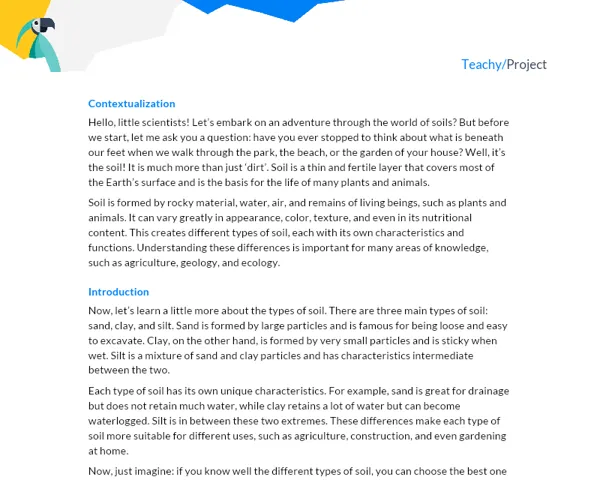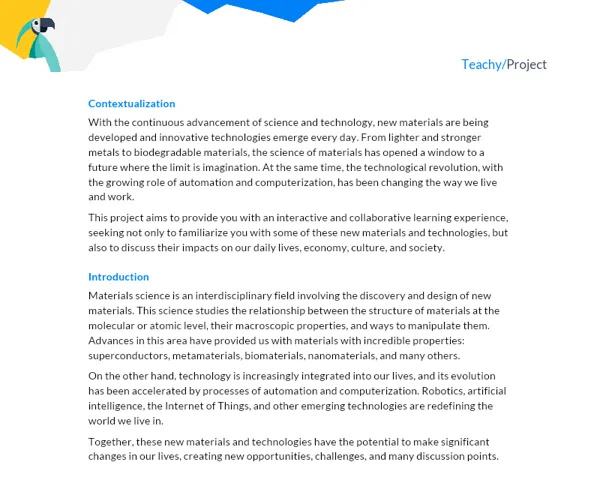Context
The human body is a complex organism, whose vital functions are carried out by interconnected and specialized systems. One of these fundamental systems for our survival is the Digestive System. Metaphorically, it is the processing and supply sector of our 'body machine', responsible for transforming food into energy and essential nutrients for all our daily activities.
Digestion is a chemical and physical process that begins in the mouth with chewing and extends to the intestine, where nutrient absorption takes place. Understanding how this process occurs helps us comprehend the importance of a healthy and balanced diet, as well as raising awareness about diseases and conditions that can affect the digestive system, directly impacting our health and well-being.
The relevance of this system goes beyond biological functions; it influences social and cultural aspects, such as eating habits and culinary traditions. Discussing and learning about the Digestive System can trigger an expanded interest in human biology, nutrition, and even foster the awakening of future careers in the healthcare field.
Real-World Importance
A detailed understanding of the Digestive System has immediate practical implications in students' lives. Digestive problems, such as indigestion and food intolerances, are common and affect people around the world daily. By knowing the structure and function of the organs involved in digestion, students can make informed decisions that promote better digestive health.
Moreover, we live in a time when society increasingly discusses diets, processed and organic foods, and food sustainability. Knowledge of how the body processes food allows students to participate in these discussions critically and based on scientific evidence. This reinforces the idea of active and conscious citizenship, directly linked to responsible consumption and public health.
Suggested Resources
To assist students on this journey of discovery, it is essential to provide reliable and didactic resources. Here are some suggestions:
-
Science Textbooks: Usually, textbooks adopted by schools contain chapters dedicated to the Digestive System with illustrations and detailed explanations. These materials are an excellent source of basic and reliable information.
-
Health Portal: The Ministry of Health's website (Health Portal) offers information on various aspects of human health, including nutrition and digestive problems.
-
Oswaldo Cruz Foundation (Fiocruz): Fiocruz provides educational materials and scientific articles on its website (Fiocruz) that can enrich students' knowledge on health and human biology-related topics.
-
Khan Academy: A free education platform (Khan Academy) that offers videos and interactive exercises on various subjects, including the human digestive system.
-
YouTube Edu: A YouTube channel dedicated to education (YouTube Edu) where teachers present classes on various topics, including Science and Biology, in a dynamic and accessible way.
These resources can be used both for initial theoretical grounding and for deepening and subsequent discussions on the topic addressed in the project.
Practical Activity
Activity Title
"Digestive Expedition: A Journey through the Digestive System"
Project Objective
To lead students in a deep exploration of the Digestive System, integrating knowledge from Science and Arts, encouraging teamwork, creativity, and critical thinking.
Detailed Project Description
This project challenges students to represent the digestion process by creating a detailed three-dimensional model of the human digestive system, complemented by an explanatory video and a theatrical presentation.
Required Materials
- Cardboard, paper mache, clay, or modeling clay;
- Paints, brushes, and coloring materials;
- Camera or smartphone for video recording;
- Video editing software (optional);
- Fabrics and recyclable materials for costumes and scenography of the theatrical presentation.
Detailed Step-by-Step
Phase 1: Research and Planning (3-4 hours)
- Divide the class into groups of 3 to 5 students.
- Each group should research the main components and functions of the digestive system and its related diseases.
- Create a detailed sketch of the three-dimensional model that will represent the digestive system.
- Develop a script for the explanatory video and the theatrical presentation.
Phase 2: Model Construction (6-8 hours)
- Use the chosen materials to build a detailed model of the digestive system.
- Each organ should be represented, highlighting the mouth, esophagus, stomach, small intestine, large intestine, and anus.
- Ensure that all members participate in the construction, dividing tasks and responsibilities.
Phase 3: Video Production (3-4 hours)
- Record an educational video explaining each part of the digestive system, using the model as a visual aid.
- Edit the video to include subtitles, additional images, and other visual elements.
Phase 4: Theatrical Presentation (3-4 hours)
- Rehearse and perform a theatrical piece representing a 'journey' of food from the mouth to elimination.
- Use creativity to create costumes and scenarios with recyclable materials.
Project Delivery
Students must present the three-dimensional model in an exhibition, demonstrate the educational video, and perform the theatrical presentation for the class. Additionally, each group must compile a detailed report following the specified structure. The project stages will be integrated into the report as follows:
- Introduction: Students will provide the context of the digestive system and explain the importance of this project.
- Development: They will describe the theory about the digestive system, detail the methodology applied in the model construction, video production, and theatrical presentation preparation. They should discuss how each stage contributes to the understanding of the digestive system.
- Conclusion: They will reflect on what was learned during the project, including technical knowledge and socio-emotional skills developed. They will evaluate the effectiveness of the model, video, and presentation in educating about the digestive system.
- Bibliography: They will list all sources used, including books, articles, videos, and websites.
The document writing should be collaborative, with each student contributing to different sections and reviewing each other's work to ensure cohesion and completeness.


